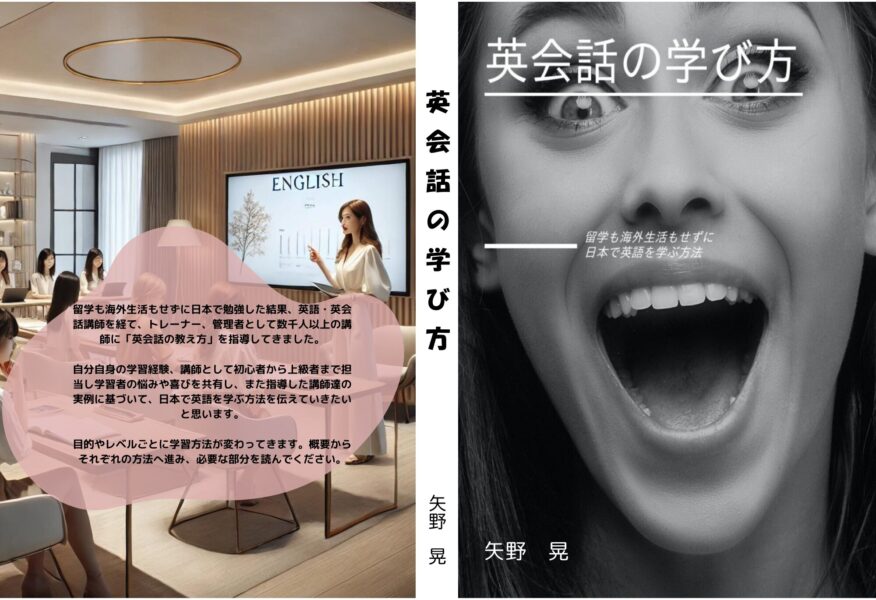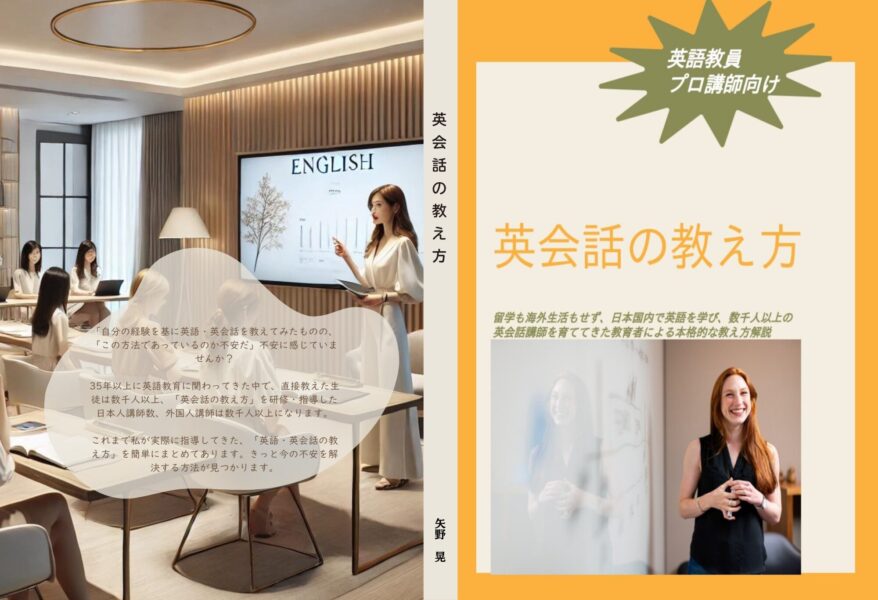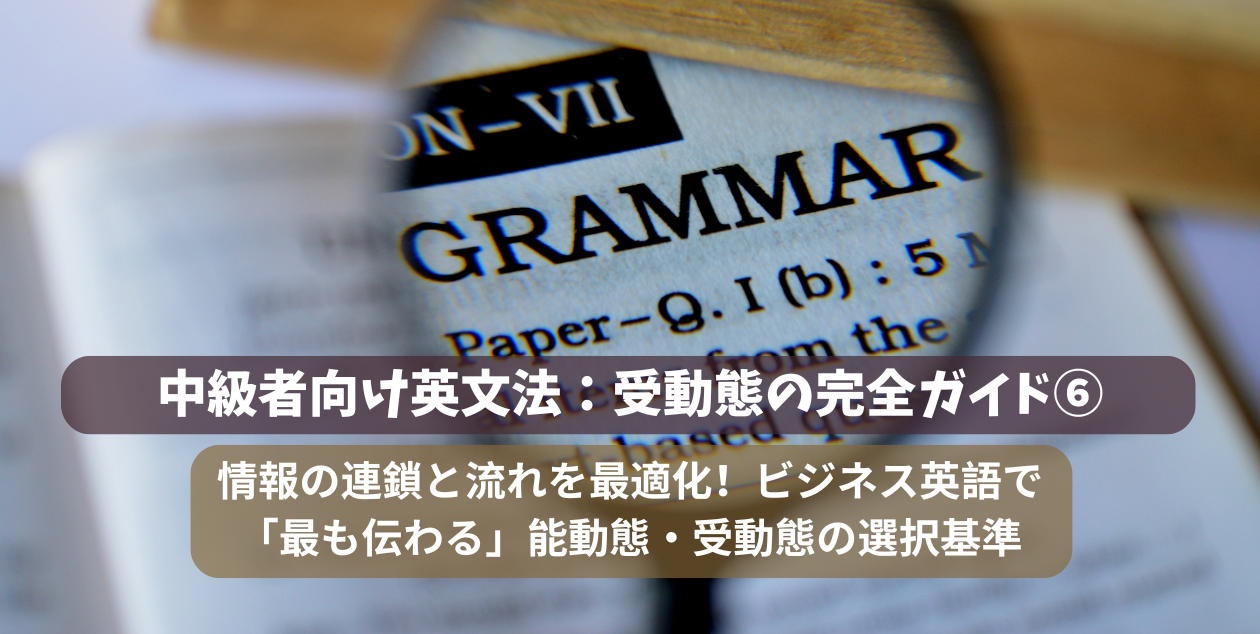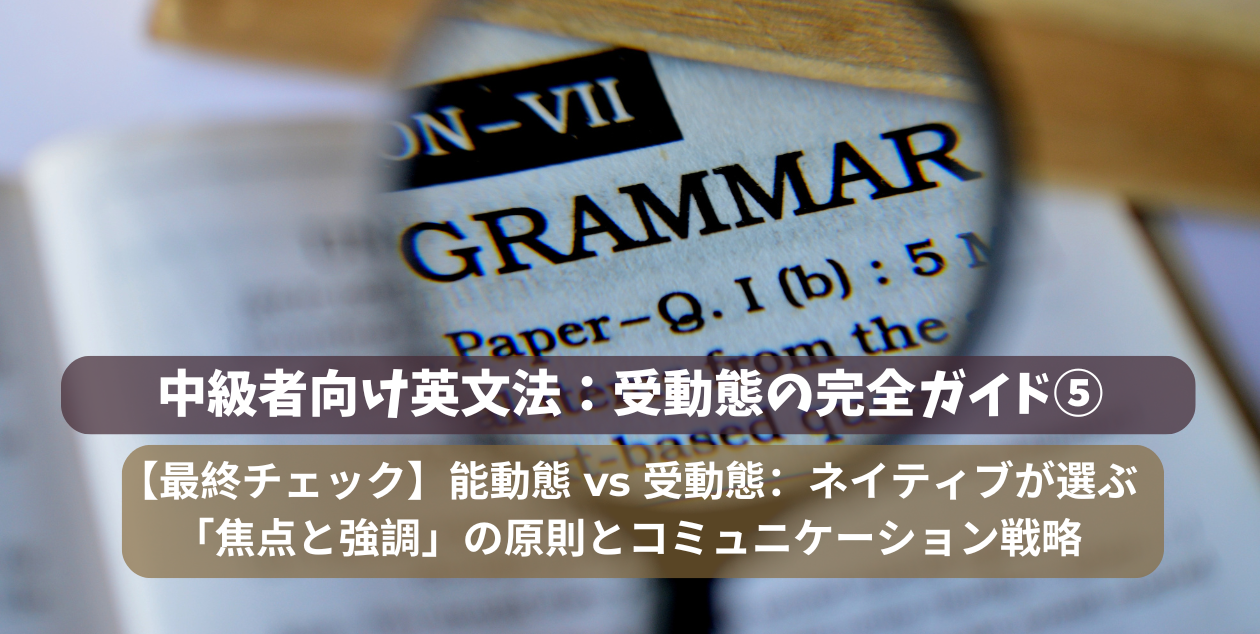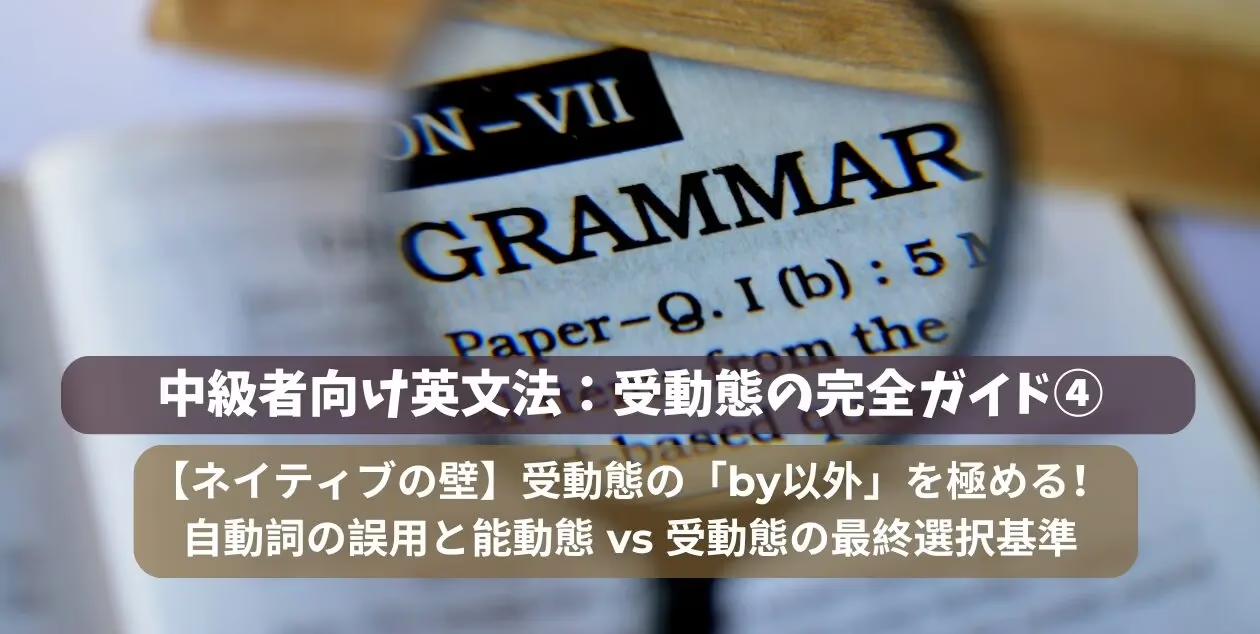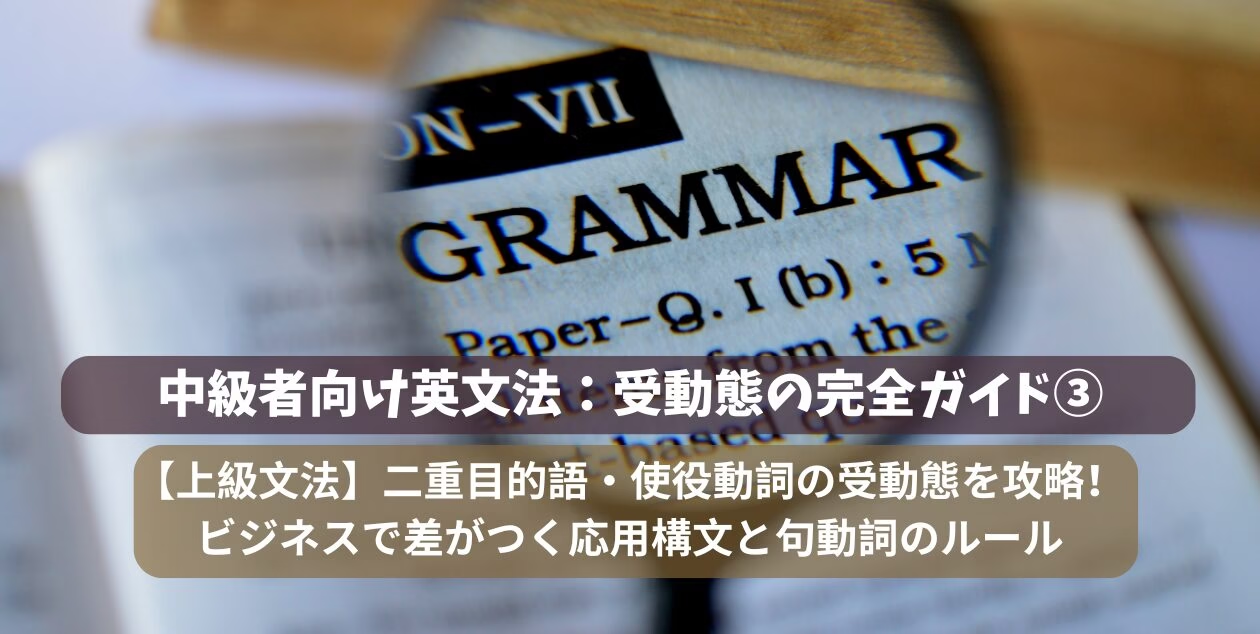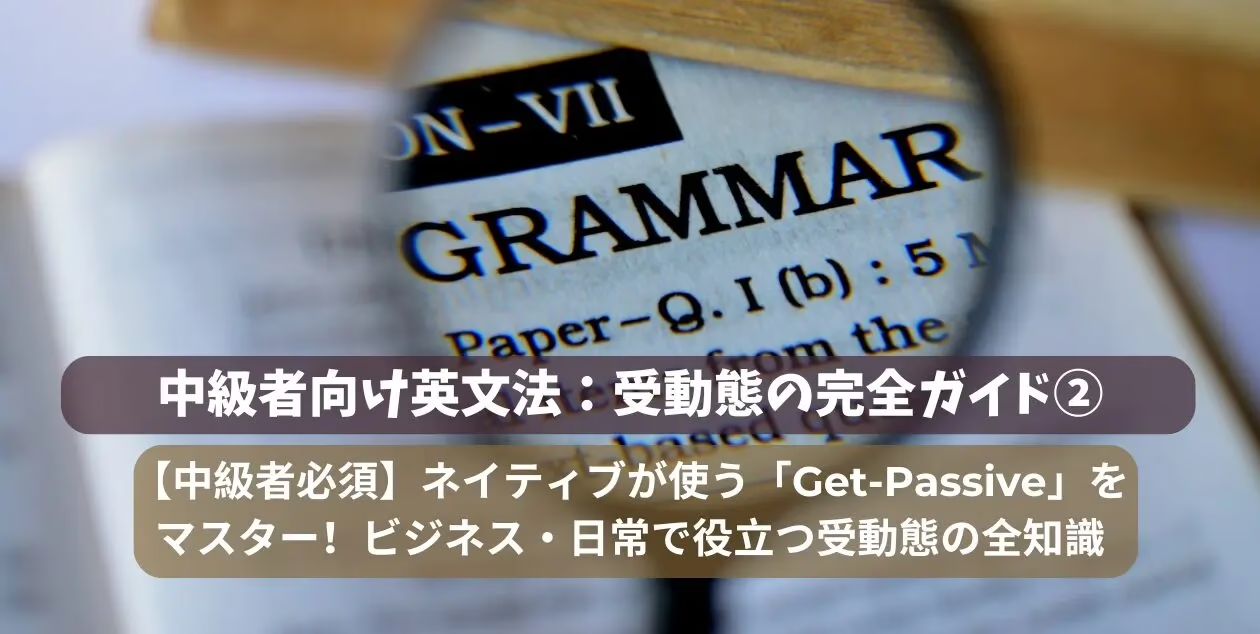国際化が進む現代の医療現場では、薬剤師にも英語でのコミュニケーション能力が必須スキルとなっています。外国人患者さんへの服薬指導、海外の医療文献の読解、国際学会での発表、さらには医師や看護師との連携など、英語を使用する場面は年々増加しています。薬剤師としての専門知識を英語でも正確に伝え、チーム医療の一員として貢献する能力が強く求められているのです。
しかし、「調剤や服薬指導でとっさに英語が出てこない」「医療連携で使う専門的な英語表現が分からない」といった不安を抱えている方も多いのではないでしょうか。薬剤師の業務に特化した英語は、一般的な英会話とは異なる専門性が求められるため、体系的な学習が不可欠です。
本記事では、薬剤師の業務を一日の流れに沿って追う形で、現場で頻繁に使用される英語表現を体系的にご紹介します。朝の業務開始から調剤、処方監査、患者対応、医療連携、そして終業時の管理まで、各フェーズで役立つ実践的なフレーズを、発音記号、詳しい解説、例文、そして実際の会話例と合わせてお届けします。この包括的なガイドを通して、あなたの専門性を英語でも存分に発揮し、グローバルな医療現場で自信を持って活躍できる基盤を築きましょう。
朝の業務開始時に使う英語表現

チームワークとコミュニケーション
Greet pharmacy team
- 発音記号: /ɡriːt ˈfɑːrməsi tiːm/
- 意味: 薬局チームに挨拶をする
- 解説: 業務開始時のチームワーク構築に欠かせない表現。スタッフ全員と明るく挨拶し、その日の連携を深める重要な行動です。
- 例文: The pharmacist greeted the pharmacy team before starting her tasks.
- 和訳: 薬剤師は業務開始前に薬局チームに挨拶した。
Check pharmacy environment
- 発音記号: /tʃek ˈfɑːrməsi ɪnˈvaɪrənmənt/
- 意味: 薬局内の環境を確認する
- 解説: 調剤台の清潔さ、棚の安全性、棚卸進行状況、照明・機器の作動確認を含む包括的な環境チェック。
- 例文: She checked the pharmacy environment to ensure everything was ready for the day.
- 和訳: 彼女は一日の開始前に薬局の環境をチェックした。
セキュリティと安全管理
Unlock medication storage
- 発音記号: /ʌnˈlɒk ˌmɛdɪˈkeɪʃən ˈstɔːrɪdʒ/
- 意味: 医薬品保管庫を解錠する
- 解説: 貴重品・要管理薬品等の保管場所を点検・解錠する重要なセキュリティ業務。
- 例文: The pharmacist unlocked the medication storage cabinet.
- 和訳: 薬剤師は薬品保管庫の鍵を開けた。
Verify medication inventory
- 発音記号: /ˈvɛrɪfaɪ ˌmɛdɪˈkeɪʃən ˈɪnvəntɔːri/
- 意味: 薬在庫を確認する
- 解説: 品切れ、期限切れ、異常がないか最新の在庫リストを点検する重要な業務。
- 例文: She verified medication inventory before opening the pharmacy window.
- 和訳: 薬局窓口を開ける前に薬剤の在庫を確認した。
Check medication expiry dates
- 発音記号: /tʃek ˌmɛdɪˈkeɪʃən ˈɛkspaɪəri deɪts/
- 意味: 薬剤の有効期限を確認する
- 解説: 期限切れ・間近の薬剤を見落とさぬよう定期的にチェックする品質管理業務。
- 例文: The pharmacist checked the medication expiry dates on each bottle.
- 和訳: 薬剤師は各薬瓶の有効期限を確認した。
調剤・処方監査で使う英語表現

処方箋の受付と確認
Receive and interpret prescriptions
- 発音記号: /rɪˈsiːv ənd ɪnˈtɜːrprɪt prɪˈskrɪpʃənz/
- 意味: 処方箋を受け取り内容を確認・解釈する
- 解説: 処方内容の真偽・矛盾・禁忌・アレルギー・処方ルール適合を確認する薬剤師の中核業務。
- 例文: She received and interpreted prescriptions before dispensing.
- 和訳: 調剤前に処方箋を受け取り内容を確認した。
Identify potential drug interactions
- 発音記号: /aɪˈdɛntɪfaɪ pəˈtɛnʃl drʌɡ ˌɪntəˈrækʃənz/
- 意味: 薬剤間相互作用の可能性を特定する
- 解説: 既服薬・併用可能性を自動判定システムや自身の知識で評価し、安全性を確保する重要な業務。
- 例文: The pharmacist identified potential drug interactions for a patient.
- 和訳: 薬剤師は患者の薬物相互作用の可能性を特定した。
Clarify ambiguous prescriptions
- 発音記号: /ˈklærɪfaɪ æmˈbɪɡjuəs prɪˈskrɪpʃənz/
- 意味: 曖昧な処方内容を確認・照会する
- 解説: 不明点・数量漏れ等があれば処方医に電話や電子照会で確認する重要なコミュニケーション業務。
- 例文: She clarified an ambiguous prescription with the physician.
- 和訳: 彼女は医師と処方内容の不明点を照会した。
調剤実務
Compound medications as needed
- 発音記号: /ˈkɒmpaʊnd ˌmɛdɪˈkeɪʃənz æz ˈniːdɪd/
- 意味: 必要に応じて薬剤を調製する
- 解説: 分包・粉砕・シロップへの調製、特注薬の混合等、個別のニーズに応じた薬剤調製。
- 例文: The pharmacist compounded medications for a pediatric patient.
- 和訳: 薬剤師は小児患者のために薬を調製した。
Label and double-check prescriptions
- 発音記号: /ˈleɪbəl ənd ˈdʌbl tʃek prɪˈskrɪpʃənz/
- 意味: 処方薬のラベル貼付・最終チェック
- 解説: 薬袋・シートに患者名や用法を記載し、量や種類を再確認する品質保証業務。
- 例文: She labeled and double-checked each prescription.
- 和訳: 彼女は全ての処方薬にラベルを貼り、再確認した。
Manage controlled substances
- 発音記号: /ˈmænɪdʒ kənˈtroʊld ˈsʌbstənsɪz/
- 意味: 向精神薬・麻薬などの厳重管理
- 解説: 帳簿記録や使用記録、保管・廃棄の手続き・取扱規則厳守が求められる重要な管理業務。
- 例文: The pharmacist managed controlled substances according to regulations.
- 和訳: 薬剤師は規定に従い向精神薬を管理した。
患者対応・服薬指導の英語表現

基本的な患者対応
Provide medication counseling
- 発音記号: /prəˈvaɪd ˌmɛdɪˈkeɪʃən ˈkaʊnsəlɪŋ/
- 意味: 薬の正しい使い方指導を行う
- 解説: 用量・副作用・服用時間など患者に分かりやすく説明する薬剤師の専門業務。
- 例文: He provided medication counseling to a patient starting a new medicine.
- 和訳: 彼は新しい薬を処方された患者に服薬指導をした。
Recommend over-the-counter products
- 発音記号: /ˌrɛkəˈmɛnd ˌoʊvər ði ˈkaʊntər ˈprɒdʌkts/
- 意味: OTC医薬品を提案・販売
- 解説: 軽い症状・市販薬について相談対応、必要に応じて適切な製品を勧める業務。
- 例文: The pharmacist recommended over-the-counter products for cold symptoms.
- 和訳: 薬剤師は風邪症状に市販薬をすすめた。
Counsel patients picking up prescriptions
- 発音記号: /ˈkaʊnsəl ˈpeɪʃənts ˈpɪkɪŋ ʌp prɪˈskrɪpʃənz/
- 意味: 処方受け取りの患者に服薬説明を行う
- 解説: 窓口で入れ替り来局する患者へ一人ひとり丁寧に説明や質問対応を行う重要な業務。
- 例文: The pharmacist counseled patients picking up their prescriptions.
- 和訳: 薬剤師は処方を受け取る患者に説明を行った。
継続的なケア
Educate patients on proper medication use
- 発音記号: /ˈɛdʒʊkeɪt ˈpeɪʃənts ɒn ˈprɒpər ˌmɛdɪˈkeɪʃən juːs/
- 意味: 正しい服薬方法を患者に教育する
- 解説: 飲み忘れ防止、自己中断防止など生活指導も含めて説明する包括的な患者教育。
- 例文: She educated a patient on proper use of inhalers.
- 和訳: 彼女は吸入薬の正しい使い方を患者に説明した。
Monitor adverse drug reactions
- 発音記号: /ˈmɒnɪtər ædˈvɜːrs drʌɡ riˈækʃənz/
- 意味: 副作用・有害事象をモニタリング
- 解説: 患者からの聞き取りや電子報告データをもとに問題発生時は速やかに対応する安全管理業務。
- 例文: The pharmacist monitored adverse drug reactions and reported findings.
- 和訳: 薬剤師は副作用をモニタリングし、所見を報告した。
医療連携・チーム医療の英語表現

医療従事者間のコミュニケーション
Communicate with prescribers
- 発音記号: /kəˈmjunɪˌkeɪt wɪð prɪˈskraɪbərz/
- 意味: 処方医と連絡・調整する
- 解説: 処方変更や疑義照会、患者の副作用報告などで医師や他職種と情報共有する重要な連携業務。
- 例文: The pharmacist communicated with prescribers about a new drug interaction.
- 和訳: 薬剤師は新たな薬剤相互作用について医師と連絡した。
Conduct medication reconciliation
- 発音記号: /kənˈdʌkt ˌmɛdɪˈkeɪʃən ˌrɛkənsɪliˈeɪʃən/
- 意味: 入退院・転院時の薬剤調整(服薬情報の突き合わせ)
- 解説: 患者の服薬リストと実際の処方を丁寧に照合、不整合を是正する専門的業務。
- 例文: He conducted medication reconciliation for a newly admitted patient.
- 和訳: 彼は新規入院患者の薬剤調整を実施した。
情報管理と記録
Update patient medication history
- 発音記号: /ʌpˈdeɪt ˈpeɪʃənt ˌmɛdɪˈkeɪʃən ˈhɪstəri/
- 意味: 服薬履歴を更新する
- 解説: 電子カルテや台帳で最新の投薬状況を記録・管理する重要なデータ管理業務。
- 例文: She updated patient medication history during her break.
- 和訳: 彼女は昼休憩中に患者の服薬履歴を更新した。
Process insurance claims
- 発音記号: /ˈprəʊsɛs ɪnˈʃʊərəns kleɪmz/
- 意味: 保険請求手続きを行う
- 解説: 医療費支払い・保険適用の問い合わせなどの書類処理を行う事務業務。
- 例文: The pharmacist processed insurance claims for prescriptions.
- 和訳: 薬剤師は処方のための保険請求を行った。
薬剤管理・在庫管理の英語表現

在庫管理
Order new stock of medications
- 発音記号: /ˈɔːrdər nuː stɒk əv ˌmɛdɪˈkeɪʃənz/
- 意味: 薬剤の発注を行う
- 解説: 不足分や消耗品、新薬導入分を卸業者・メーカーに注文する業務管理業務。
- 例文: The pharmacist ordered new stock of medications for the pharmacy.
- 和訳: 薬剤師は薬局のために新たな薬剤を発注した。
Dispose of expired medications
- 発音記号: /dɪˈspoʊz əv ɪkˈspaɪərd ˌmɛdɪˈkeɪʃənz/
- 意味: 期限切れ薬剤を廃棄する
- 解説: 薬事法・規則に則り適切に期限切れや回収薬を管理し廃棄する環境管理業務。
- 例文: She disposed of expired medications according to pharmacy policy.
- 和訳: 薬剤師は薬局の規定に従い期限切れ薬を廃棄した。
Report drug shortages or recalls
- 発音記号: /rɪˈpɔːrt drʌg ˈʃɔːrtɪdʒɪz ɔːr rɪˈkɔːlz/
- 意味: 医薬品の不足や回収情報を報告する
- 解説: メーカー欠品やリコール発生時に医療機関や患者へ情報提供する危機管理業務。
- 例文: She reported a drug shortage to the medical staff.
- 和訳: 薬剤師は医療スタッフへ薬剤不足を報告した。
業務終了時の管理
Balance the cash register
- 発音記号: /ˈbæləns ðə kæʃ ˈrɛdʒɪstər/
- 意味: レジ金額を精算する
- 解説: 保険薬局や調剤薬局では受付金額を集計し、ミスがないか確認する会計業務。
- 例文: The pharmacist balanced the cash register before closing.
- 和訳: 閉局前にレジ金額を精算した。
Clean and organize the pharmacy
- 発音記号: /kliːn ənd ˈɔːrɡənaɪz ðə ˈfɑːrməsi/
- 意味: 薬局内の清掃・整理整頓
- 解説: 調剤台、窓口、休憩スペースまで徹底的に整える清潔管理業務。
- 例文: She cleaned and organized the pharmacy at the end of her shift.
- 和訳: 彼女は勤務終了時に薬局内を整理整頓した。
Lock up medication storage
- 発音記号: /lɒk ʌp ˌmɛdɪˈkeɪʃən ˈstɔːrɪdʒ/
- 意味: 薬品保管庫を施錠する
- 解説: 麻薬・向精神薬を含むすべての薬品庫を確実に施錠する重要なセキュリティ業務。
- 例文: The pharmacist locked up the medication storage before leaving.
- 和訳: 薬剤師は退勤前に薬品保管庫を施錠した。
Leave the pharmacy
- 発音記号: /liːv ðə ˈfɑːrməsi/
- 意味: 薬局を出る
- 解説: 業務日誌などを確認し、退勤する業務完了の表現。
- 例文: She left the pharmacy after completing all her duties.
- 和訳: 彼女は業務を終え薬局を後にした。
主要な薬の種類と処方方法

薬の分類
Analgesics(鎮痛薬)
- 発音記号: /ˌæn.əlˈdʒiː.zɪks/
- 意味: 痛みを和らげる薬
- 解説: NSAIDs(非ステロイド性抗炎症薬:ロキソプロフェン等)やオピオイド(モルヒネ等)などが含まれる。
- 例文: Analgesics are dispensed for patients with headaches or post-surgical pain.
- 和訳: 鎮痛薬は頭痛や術後痛の患者に調剤される。
Antibiotics(抗生物質)
- 発音記号: /ˌæn.ti.baɪˈɒt.ɪks/
- 意味: 細菌感染治療薬
- 解説: ペニシリンやセフェム系など、感受性や耐性を考慮して処方される重要な感染症治療薬。
- 例文: The pharmacist checks allergies before dispensing antibiotics.
- 和訳: 薬剤師は抗生物質の調剤前にアレルギーを確認する。
Antihypertensives(降圧薬)
- 発音記号: /ˌæn.tiˈhaɪ.pərˌten.sɪvz/
- 意味: 血圧を下げる薬
- 解説: ACE阻害薬、ARB、Ca拮抗薬、利尿薬など。多剤併用に注意が必要な慢性疾患治療薬。
- 例文: Antihypertensives should be taken at the same time every day.
- 和訳: 降圧薬は毎日同じ時間に服用する。
Hypolipidemic agents(脂質異常症治療薬)
- 発音記号: /haɪ.poʊˌlɪp.ɪˈdiː.mɪk ˈeɪ.dʒənts/
- 意味: コレステロールを下げる薬(スタチンなど)
- 解説: 高脂血症や動脈硬化予防のため長期処方される生活習慣病治療薬。
- 例文: Statins are a common type of hypolipidemic agent.
- 和訳: スタチンはよく使われる脂質異常症治療薬である。
Anti-diabetics(糖尿病治療薬)
- 発音記号: /ˌæn.tiˌdaɪ.əˈbiː.tɪks/
- 意味: 血糖値を下げる薬
- 解説: インスリン、GLP-1受容体作動薬、ビグアナイド系(メトホルミン)など多様な作用機序を持つ。
- 例文: Anti-diabetic medications may be oral or injectable.
- 和訳: 糖尿病治療薬には経口薬と注射薬がある。
Antidepressants(抗うつ薬)
- 発音記号: /ˌæn.ti.dɪˈprɛs.ənts/
- 意味: うつ状態・気分障害の治療薬
- 解説: SSRI、三環系など。効果発現に数週間かかる場合もあり、患者への説明が重要。
- 例文: The pharmacist counsels patients about the gradual effects of antidepressants.
- 和訳: 薬剤師は抗うつ薬は効果発現が遅いことを説明する。
Antihistamines(抗ヒスタミン薬)
- 発音記号: /ˌæn.tiˈhɪs.tə.miːnz/
- 意味: アレルギーや花粉症症状を緩和
- 解説: 眠気の出やすい第一世代と、眠気の少ない第二世代があり、患者の生活に配慮した選択が重要。
- 例文: Antihistamines can relieve symptoms of hay fever.
- 和訳: 抗ヒスタミン薬は花粉症の症状を和らげる。
Anticoagulants(抗凝固薬)
- 発音記号: /ˌæn.ti.kəʊˈæɡ.jʊ.lənts/
- 意味: 血液の凝固を抑制(血栓予防)
- 解説: ワルファリン、DOAC(直接経口抗凝固薬)など。用量・相互作用管理が極めて重要。
- 例文: Patients on anticoagulants require regular blood tests.
- 和訳: 抗凝固薬服用中は定期的な血液検査が必要。
Bronchodilators(気管支拡張薬)
- 発音記号: /brɒŋ.kəʊ.daɪˈleɪ.tərz/
- 意味: 喘息やCOPDで気道を広げる薬
- 解説: β2刺激薬、抗コリン薬など。吸入指導が必須で、薬剤師の技術的指導が重要。
- 例文: Bronchodilators are often prescribed as inhalers.
- 和訳: 気管支拡張薬は吸入薬として処方される。
Hypnotics / Sedatives(睡眠薬・鎮静薬)
- 発音記号: /hɪpˈnɒtɪks/ /sɪˈdeɪtɪvz/
- 意味: 不眠・不安を緩和する薬
- 解説: ベンゾジアゼピン系、非ベンゾ系など依存・転倒リスクに注意が必要な管理薬。
- 例文: Sedatives must be dispensed with extra caution for elderly patients.
- 和訳: 鎮静薬は高齢者には特に注意して調剤する。
処方方法
Paper prescription(紙処方箋)
- 意味: 医師が手書きまたは印刷し、患者が直接薬局へ提出
- 解説: 最も伝統的な処方方法、サインと印が必要
- 例文: Patients bring a paper prescription to the pharmacy.
- 和訳: 患者は薬局に紙処方箋を持参する。
Electronic prescription(電子処方箋)
- 意味: 医師から薬局へ電子的に発行される処方
- 解説: オンラインシステムや専用端末で送信、薬剤師は画面で内容を確認
- 例文: The pharmacist received an electronic prescription via the hospital system.
- 和訳: 薬剤師は電子処方箋を院内システムで受け取った。
Verbal prescription(口頭指示)
- 意味: 特定の場合(救急時等)、医師の電話や直接の口頭指示で処方
- 解説: 原則、後日正式な書面処方箋を回収する必要あり
- 例文: A verbal prescription was given in an emergency.
- 和訳: 緊急時に口頭処方指示が出された。
投与経路・剤型に関する英語表現

基本的な投与経路
Take orally / oral medication / by mouth
- 発音記号: /teɪk ˈɔːrəli/ /ˈɔːrəl ˌmɛdɪˈkeɪʃən/ /baɪ maʊθ/
- 意味: 経口で服用する(飲み薬)
- 解説: 錠剤・カプセル・顆粒・液剤など、口から飲む薬。毎食後、寝る前など時間指定も多い。
- 例文: Take the medication orally with water after meals.
- 和訳: この薬は食後に水と一緒に経口服用してください。
Apply a transdermal patch / topical patch
- 発音記号: /əˈplaɪ ə trænzˈdɜːrməl pætʃ/ /ˈtɒpɪkəl pætʃ/
- 意味: 経皮吸収型の貼付剤(シップ・貼り薬)
- 解説: 皮膚からゆっくりと薬を体内に吸収させる。鎮痛剤やホルモン、ニコチン補助などで使用。
- 例文: Apply the transdermal patch to a clean, dry area on your upper arm once a day.
- 和訳: 貼付剤を毎日、上腕の清潔で乾いた場所に貼ってください。
Use an inhaler / administer by inhalation
- 発音記号: /juːz ən ɪnˈheɪlər/ /ədˈmɪnɪstər baɪ ˌɪnheɪˈleɪʃən/
- 意味: 吸入薬(吸う薬・吸入式)
- 解説: 喘息やCOPD治療などで、気管支に直接薬を届けるエアゾール・粉末・ネブライザーなど。
- 例文: Shake the inhaler and inhale the medication twice daily.
- 和訳: 吸入薬はよく振って、1日2回吸入してください。
Instill eye drops / use eye drops
- 発音記号: /ɪnˈstɪl aɪ drɒps/ /juːz aɪ drɒps/
- 意味: 点眼薬(目薬)
- 解説: アレルギー、感染症、ドライアイなどの治療で目の中に一滴ずつ投与。
- 例文: Instill one drop of the medication into each eye every morning and evening.
- 和訳: この薬は毎朝毎晩、各目に1滴ずつ点眼してください。
Administer by injection / give an injection
- 発音記号: /ədˈmɪnɪstər baɪ ɪnˈdʒɛkʃən/ /ɡɪv ən ɪnˈdʒɛkʃən/
- 意味: 注射で投与する(注射薬)
- 解説: 皮下(subcutaneous)、筋肉内(intramuscular)、静脈内(intravenous)など。即効性や確実な投与が必要な場合。
- 例文: The antibiotic is administered by injection twice a day.
- 和訳: この抗生物質は1日2回注射で投与されます。
実践的な会話例

薬剤師同士の会話
Anna: Good morning, David! Did you greet the pharmacy team when you came in?
David: Of course! I always think starting the day by greeting the pharmacy team makes a difference. After that, I went to check the pharmacy environment and made sure everything was tidy.
Anna: Thanks for doing that. Did you already unlock the medication storage and verify the medication inventory?
David: Yes, I unlocked the medication storage and then verified the medication inventory. I also checked medication expiry dates this morning—there’s one batch nearing expiration.
Anna: Good catch! I’ll set those aside. Have you started to receive and interpret prescriptions for today’s orders?
David: I have. I also needed to identify potential drug interactions for one patient with complex medications, and I had to clarify an ambiguous prescription with Dr. Lee.
Anna: Great teamwork! Now, could you compound medications as needed for the pediatric ward?
David: Sure. I’ll get started. While I’m at it, I’ll label and double-check prescriptions and keep an eye on the controlled drugs cabinet to manage controlled substances.
Anna: I’m about to see a patient for counseling. I’ll provide medication counseling on his new antihypertensive, and maybe recommend an over-the-counter product if his symptoms require it.
David: Perfect. Don’t forget to update the patient’s medication history in the system when you’re done.
Anna: Thanks for the reminder. And if you finish early, could you process some insurance claims before lunch?
David: Of course. Then let’s have a quick lunch break before the afternoon rush.
Anna: After lunch, I’ll communicate with prescribers regarding a drug interaction and conduct medication reconciliation for the new admission.
David: In the afternoon, I usually monitor adverse drug reactions and educate patients on proper medication use, especially inhalers.
Anna: I need to order new stock of medications soon and dispose of expired medications as per protocol.
David: Near closing time, I’ll help counsel patients picking up prescriptions, and if there are any shortages, I’ll report drug shortages or recalls to the staff.
Anna: When everything’s done, let’s balance the cash register and clean and organize the pharmacy. Don’t forget to lock up medication storage before we leave the pharmacy!
David: Absolutely. Together, we make the pharmacy run smoothly!
アンナ:おはよう、デイビッド!今朝、薬局チームに挨拶(greet the pharmacy team)はした?
デイビッド:もちろん!朝一番に薬局チームに挨拶をするとその日一日が違うよね。その後すぐに薬局内の環境確認(check the pharmacy environment)をして、きちんと整理整頓できているか確認したよ。
アンナ:ありがとう。薬品保管庫の解錠(unlock the medication storage)と薬剤在庫の確認(verify the medication inventory)はもうやった?
デイビッド:うん、薬品保管庫の解錠も薬剤在庫の確認も済ませたよ。今朝は薬剤の有効期限チェック(checked medication expiry dates)もしたんだけど、一部で期限が近いものがあったんだ。
アンナ:よく見つけてくれたね!それは分けておくわ。今日の処方箋受け取りと内容確認(receive and interpret prescriptions)はもう始めてる?
デイビッド:もう始めてるよ。それと、薬の数が多い患者さんで薬剤間相互作用の可能性を特定(identify potential drug interactions)したし、不明点があったのでDr. Leeと曖昧な処方内容の確認(clarify an ambiguous prescription)もしたよ。
アンナ:さすがだね。じゃあ、小児病棟向けに必要に応じ薬剤の調製(compound medications as needed)をお願いできる?
デイビッド:任せて。準備に入るね。作業しながら処方薬のラベル貼付と最終チェック(label and double-check prescriptions)もするし、向精神薬や麻薬の管理も気を付けて厳重管理(manage controlled substances)しておくよ。
アンナ:私は今から患者さんの指導に行くわ。新しい降圧薬の服薬指導(provide medication counseling)をして、必要なら市販薬の提案(recommend an over-the-counter product)もするかも。
デイビッド:ばっちりだね。指導が終わったらシステムで服薬履歴の更新(update the patient’s medication history)も忘れずに。
アンナ:助かるわ。もし早く終わったら、ランチ前に保険請求処理(process some insurance claims)もお願いできる?
デイビッド:もちろん。その後、午後の忙しさ前に一緒に軽い昼食休憩(have a quick lunch break)を取ろう。
アンナ:ランチ後は、薬の相互作用について処方医との連絡(communicate with prescribers)と新規入院患者の薬剤調整(conduct medication reconciliation)もする予定。
デイビッド:午後は普段どおり、副作用モニタリング(monitor adverse drug reactions)と患者さんへの正しい服薬方法の教育(educate patients on proper medication use)、特に吸入薬の指導を担当するよ。
アンナ:そろそろ薬剤発注(order new stock of medications)しないといけないし、期限切れ薬剤の廃棄(dispose of expired medications)もルール通り行うね。
デイビッド:閉局前には、処方受け取り患者への服薬説明(counsel patients picking up prescriptions)もサポートするし、不足している薬があれば速やかに不足・回収報告(report drug shortages or recalls)もしておくよ。
アンナ:すべてが終わったらレジ締め(balance the cash register)と薬局内の清掃・整理(clean and organize the pharmacy)をしよう。忘れずに薬品保管庫の施錠(lock up medication storage)もしてから薬局を出る(leave the pharmacy)のよ!
デイビッド:了解。協力してるから薬局がスムーズに回るね!
看護師との会話
Nurse Sarah: Good morning, John. I have a question about Mr. Lee’s medication. Have you received and interpreted the prescription from the doctor yet?
Pharmacist John: Good morning, Sarah. Yes, I already received and interpreted the prescription this morning. However, I did identify a potential drug interaction with one of the patient’s current medications, so I need to communicate with the prescriber for clarification.
Nurse Sarah: Thanks for catching that. Could you also provide medication counseling for Mr. Lee? He seemed unsure about how to take the new medicine.
Pharmacist John: Absolutely. I will explain the dosage and any possible side effects. Also, I plan to recommend an over-the-counter product for his mild cough if needed.
Nurse Sarah: That sounds great. I’ll make sure to carefully monitor adverse drug reactions when administering the medication to him.
Pharmacist John: Please do. After that, I’ll update the patient medication history in the system and prepare to compound medications as needed for the pediatric ward.
Nurse Sarah: Perfect. One more thing—can you check if the medication for Mrs. Tanaka has expired? I think she was given medicine that might be close to the expiry date.
Pharmacist John: Good point. I’ll check medication expiry dates right now and replace any expired or soon-to-expire drugs.
Nurse Sarah: Thank you for your thoroughness. Also, if you finish your tasks early, could you assist in labeling and double-checking prescriptions for the afternoon shift?
Pharmacist John: Of course. And don’t worry, I always manage controlled substances carefully to follow regulations.
Nurse Sarah: That reassures me. Thanks for all your help, John. Let’s continue coordinating well to provide the best care.
Pharmacist John: Definitely, Sarah. Let’s keep each other updated during the next handover as well.
看護師サラ:おはよう、ジョン。リーさんの薬について質問があるんだけど、医師からの処方箋はもう受け取り、内容を確認(received and interpreted the prescription)した?
薬剤師ジョン:おはよう、サラ。はい、今朝すでに処方箋を受け取り、内容を理解(received and interpreted the prescription)したよ。ただ、患者の現在の薬と薬剤間相互作用の可能性(identify a potential drug interaction)が見つかったから、確認のために処方医と連絡を取る(communicate with the prescriber)必要がある。
看護師サラ:それを見つけてくれてありがとう。リーさんには新しい薬の服用方法がわかりにくそうだったから、服薬指導(provide medication counseling)もお願いできる?
薬剤師ジョン:もちろんだよ。用法や副作用についてきちんと説明するよ。それから、もし必要なら咳が軽いので、市販薬も提案(recommend an over-the-counter product)するつもりだ。
看護師サラ:それは助かるわ。薬を投与するときに、副作用に注意してモニタリング(monitor adverse drug reactions)するね。
薬剤師ジョン:よろしくね。終わったらシステムに服薬履歴の更新(update the patient medication history)もしておくし、小児病棟への薬の調製(compound medications as needed)も準備するよ。
看護師サラ:完璧ね。あと一つだけ…田中さんの薬が期限切れかもしれないんだけど、確認してもらえる?
薬剤師ジョン:それは良い指摘だ。今すぐ薬剤の有効期限を確認(check medication expiry dates)して、期限切れや近い薬は交換しておくよ。
看護師サラ:気を配ってくれてありがとう。もし仕事が早く終わったら、午後のシフト分の処方薬のラベル貼付とダブルチェック(labeling and double-checking prescriptions)も手伝ってくれる?
薬剤師ジョン:もちろんだよ。それに、向精神薬や麻薬の管理(manage controlled substances)はいつも厳重にやっているから心配ないよ。
看護師サラ:それを聞いて安心したわ。ジョン、本当にありがとう。これからも連携をしっかり取りながら良いケアを提供していこうね。
薬剤師ジョン:そうだね、サラ。次の申し送り(handover)のときも情報を共有し合おう。
“A Day in the Life of a Pharmacist“を読んでみましょう!

A Day in the Life of a Pharmacist
At 8:00 AM sharp, Emily greeted the pharmacy team with a warm smile, setting a positive tone for the day ahead. She then proceeded to check the pharmacy environment, making sure the workspace was clean, shelves were organized, and equipment was functioning properly. After this, she unlocked the medication storage, gaining access to the medicines needed throughout the day.
By 8:30 AM, Emily began to verify medication inventory, carefully examining stock levels to avoid shortages. She also checked medication expiry dates on each bottle, removing any that were near expiration to ensure patient safety.
At 9:00 AM, the orders started arriving. Emily diligently received and interpreted prescriptionsfrom doctors, reviewing every detail to ensure the accuracy and appropriateness of each. When she identified potential drug interactions in a patient’s medications, she promptly prepared to communicate with the prescriber to clarify the best course of action. In one instance, she needed to clarify an ambiguous prescription with the physician before proceeding.
By 10:00 AM, some prescriptions required special handling. Emily carefully compounded medications as needed, preparing custom dosages and formulations for pediatric patients. She then labeled and double-checked prescriptions to confirm that every detail — from dosage to patient name — was correct. Meanwhile, she diligently managed controlled substances in strict compliance with regulations, keeping detailed records and ensuring secure storage.
Around 11:00 AM, Emily began providing medication counseling for patients starting new treatments, explaining proper usage, possible side effects, and answering questions. When appropriate, she also recommended over-the-counter products to address minor symptoms and improve patient comfort.
At noon, during her break, Emily took time to update patient medication histories in the system, ensuring all records were current. She also processed insurance claims for medications dispensed that day. With a busy afternoon ahead, she enjoyed a quick lunch break before returning to her duties.
In the early afternoon, Emily continued her proactive communication by communicating with prescribers regarding changes and concerns. She carefully conducted medication reconciliationfor newly admitted patients, comparing prescribed medications with actual use to prevent errors.
Throughout the afternoon, Emily continued to monitor adverse drug reactions, paying special attention to patient feedback and documentation. She also took time to educate patients on proper medication use, especially demonstrating how to use inhalers correctly.
By 3:00 PM, she reviewed inventory and ordered new stock of medications, placing orders with suppliers to maintain an adequate medicine supply. Any expired medications found during this time were appropriately disposed of in line with regulations.
As the pharmacy became busier, Emily focused on counseling patients picking up prescriptions, taking time to answer last-minute questions and reinforce medication directions. She also reported drug shortages or recalls to the medical staff to ensure continued patient safety.
Finally, at the end of the day, Emily proceeded to balance the cash register, ensuring all transactions were accurate. She then cleaned and organized the pharmacy, leaving the environment spotless and ready for the next shift. Before she left the pharmacy, she securely locked up the medication storage, completing her responsibilities with care and professionalism.
薬剤師の1日
朝8時ちょうど、エミリーは笑顔で薬局チームに挨拶(greeted the pharmacy team)し、その日の良いスタートを切った。続いて、薬局の作業環境を確認し(checked the pharmacy environment)、作業台や棚がきれいに整理されていること、機器が正常に動いていることを確かめた。それから、医薬品の保管庫を解錠(unlocked the medication storage)して、1日使う薬剤にアクセスした。
8時30分になると、エミリーは薬剤の在庫を確認し(verified medication inventory)、不足や欠品がないか慎重にチェックした。また、各ボトルの薬剤の有効期限(medication expiry dates)を調べ、期限が近いものは取り除いて、患者の安全を守った。
9時には調剤依頼が増え始めた。エミリーは医師からの処方を受け取り内容を確認(received and interpreted prescriptions)し、一つひとつ詳細を検証した。患者の服薬リストで薬剤間相互作用(potential drug interactions)の可能性を見つけると、すぐに処方医に連絡(communicate with the prescriber)し、対応方法を確認した。ときには不明瞭な処方内容についても、医師に照会(clarify an ambiguous prescription)した。
10時になると、特殊な処方には丁寧に対応した。エミリーは小児患者向けに必要に応じて薬剤を調製し(compounded medications as needed)、そしてすべての処方薬にラベルを貼り最終確認(labeled and double-checked prescriptions)を行った。同時に、向精神薬や麻薬などの厳重管理(managed controlled substances)も怠らず、記録を詳細に残し安全保管に努めた。
11時を過ぎると、新たに薬が処方された患者に対して服薬指導(provided medication counseling)をし、用法や副作用をわかりやすく説明した。必要に応じて軽微な症状には市販薬を提案(recommended over-the-counter products)して患者の快適さ向上にも努めた。
正午の休憩時間には、服薬記録をシステムに更新し(updated patient medication histories)、その日の調剤に関する保険請求も処理(processed insurance claims)した。多忙な午後に備えて、短時間の昼食休憩(quick lunch break)をとった。
午後になると、再び医師や他の処方者と連絡を取り合い(communicated with prescribers)変更や問題点を相談した。また、新規入院患者に対しては処方された薬と現在の服用薬を丁寧に突き合わせる薬剤調整(medication reconciliation)も実施した。
午後中は常に副作用の有無をモニタリングし(monitored adverse drug reactions)、患者からの報告に注意を払い、必要ならば改善策を検討。また、特に吸入薬の使い方など、正しい服薬方法を教育(educated patients on proper medication use)する時間も確保した。
3時頃には、在庫状況を確認して新たな薬剤を発注(ordered new stock of medications)し、期限切れの薬は規則に則って廃棄(disposed of expired medications)した。
薬局が混み合う時間には、処方薬を受け取る患者一人ひとりに丁寧に服薬説明(counseled patients picking up prescriptions)を行い、必要な質問に対応した。さらに、薬剤不足や回収の情報を医療スタッフに報告(reported drug shortages or recalls)し、安全確保に努めた。
そして、業務終了時にはレジの金銭を精算(balanced the cash register)し、その後薬局全体を清掃・整理整頓(cleaned and organized the pharmacy)した。最後に、医薬品の保管庫を確実に施錠(locked up the medication storage)してから、薬局を後に(left the pharmacy)した。
まとめ

本記事では、薬剤師の多岐にわたる業務に焦点を当て、一日の流れに沿って現場で必要となる英語表現を網羅的にご紹介しました。朝の準備から始まり、処方監査、服薬指導、医療連携、薬剤管理、そして終業時の業務まで、各フェーズで役立つ重要なフレーズを深く掘り下げてきました。
これらの英語表現は、単なる単語の羅列ではなく、外国人患者さんへの質の高い服薬指導や、医療チーム内での円滑な情報共有に直結する実践的なものです。発音記号や豊富な例文、リアルな会話例を通じて、業務の様々な場面で「いつ」「どのように」英語を使うべきか、具体的なイメージが掴めたことと思います。また、薬の種類や剤型、投与経路に関する専門用語を学ぶことで、より専門性の高いコミュニケーションが可能になるでしょう。
薬剤師として正確な英語コミュニケーション能力を身につけることは、患者さんの安全を守り、多職種連携を円滑にし、ひいては医療全体の質向上に貢献するために極めて重要です。この記事が、あなたの医療英語学習の一助となり、グローバルな医療の最前線で自信を持って業務に携わるための確かな基盤となることを心から願っています。
英語・英会話の基礎を学びたい方はこちらから! ↓

語彙力強化したい方はこちらから! ↓












